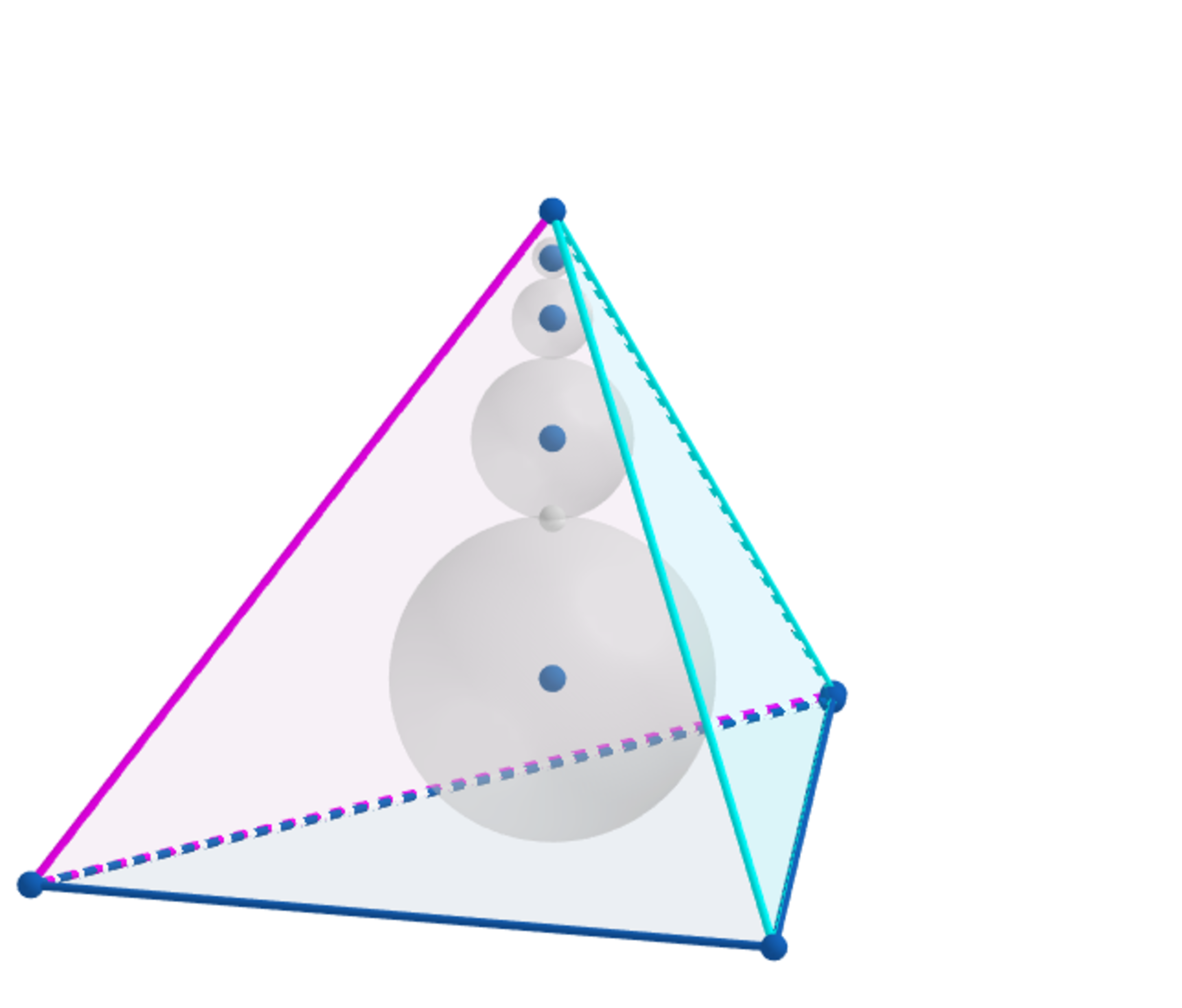Stack em up!

In the regular tetrahedron above, extend the diagram to an infinite number of inscribed spheres and let be the volume of the th inscribed sphere.
if and the length of a edge of the above regular tetrahedron can be expressed as , where and are coprime positive integers, find .
The answer is 10.
This section requires Javascript.
You are seeing this because something didn't load right. We suggest you, (a) try
refreshing the page, (b) enabling javascript if it is disabled on your browser and,
finally, (c)
loading the
non-javascript version of this page
. We're sorry about the hassle.
Using the above diagram ⟹ R 1 2 3 a = x 3 2 ⟹ x = 2 2 R 1
Right △ C O P ⟹ 9 R 1 2 = 3 2 a 2 − 2 3 2 a R 1 + R 1 2 ⟹
4 R 1 2 + 3 2 a R 1 − 3 1 a 2 = 0 ⟹ R 1 = 2 6 a dropping the negative root.
H 1 = 3 2 and R 1 = 2 6 a ⟹ H 2 = H 1 − 2 R 1 = 6 a and H 1 H 2 = 2 ⟹
H 2 = 2 1 H 1 ⟹ R 2 = 2 1 R 1 ⟹ R 3 = 2 1 R 2 = 2 2 1 R 1 and in general
R n = ( 2 1 ) n − 1 R 1
Note here that 2 R 1 ∑ n = 1 ∞ R n = 4 R 1 = 4 ( 2 6 1 ) = 3 2 = H 1 .
R n = ( 2 1 ) n − 1 R 1 ⟹ V n = 3 4 π ( 8 1 ) n − 1 R 1 3
⟹ V = 3 4 π R 1 3 ( ∑ n = 1 ∞ ( 8 1 ) n − 1 ) = 3 4 π R 1 3 ( 7 8 ) =
3 4 π ( 2 6 a ) 3 ( 7 8 ) = 3 4 π ( 8 ∗ 6 6 a 3 ) ( 7 8 ) = 6 3 6 2 π a 3 = 6 π ⟹ a 3 = 3 3 ∗ 7 ⟹
a = 3 3 7 = α 3 β ⟹ a + b = 1 0 .